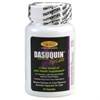 I know that I keep discussing urinary problems with regards to cats, but I cannot overstress enough how large of a problem it is in my daily, veterinary practice. I thought that maybe, it might be a large part of your cat’s life. Or it may be in the future.
I know that I keep discussing urinary problems with regards to cats, but I cannot overstress enough how large of a problem it is in my daily, veterinary practice. I thought that maybe, it might be a large part of your cat’s life. Or it may be in the future.
So, as I said, urinary problems are common in the cat population. We see infections. We also see bladder stones, which both male and female cats can develop in their urine, after having a tendency to develop crystals in their urine. This is a particularly worrisome finding in male cats, because the crystals can come together and form sand, which can combine with mucus and other debris in the urine and cause an obstruction to the flow of urine. This is a life-threatening condition in male cats. (Female cats do not suffer this type of urinary tract obstruction nearly as often, if at all.).
Another common, worrisome situation we commonly see is when your cat does not have any crystals in his or her urine, while exhibiting the same signs (urinating inappropriately, on clothing, sheets, out of the letterbox, straining or crying out as he/she urinates, etc.) as those that do. Your cat may turn out to mainly have blood in his or her urine, and no evidence of infection. We call this “idiopathic cystitis”, which is just a fancy way of saying that your cat has an inflamed bladder for no known reason. This can be frustrating for you and your vet, because without a known cause, it is impossible to come up with a definitive treatment.
 Well, not exactly. The good news is that there are some treatments that seem to help. Dasuquin is a veterinary formulation of glucosamine and chondroitin, a supplement commonly given to cats and dogs with arthritis. There was some suggestion that this supplement might help reduce the incidence of idiopathic cystitis in cats, but subsequent studies have not been universally supportive of this. However, in the studies performed, many cats that received this supplement showed dramatic improvement. I personally think that it helps, and that it is worth trying, and that it can’t hurt. The worst scenario is that it will have no effect at all, and thus, I recommend it quite often to my feline patients.
Well, not exactly. The good news is that there are some treatments that seem to help. Dasuquin is a veterinary formulation of glucosamine and chondroitin, a supplement commonly given to cats and dogs with arthritis. There was some suggestion that this supplement might help reduce the incidence of idiopathic cystitis in cats, but subsequent studies have not been universally supportive of this. However, in the studies performed, many cats that received this supplement showed dramatic improvement. I personally think that it helps, and that it is worth trying, and that it can’t hurt. The worst scenario is that it will have no effect at all, and thus, I recommend it quite often to my feline patients.
Increasing the water consumption in cats with cystitis has also been shown to be beneficial. This can be achieved by feeding canned food rather than dry food, and by encouraging the cat to drink more water. Placing water bowls in an unusual place, like the corner of the living room or bedroom will often pique a cat’s curiosity and result in the cat drinking more water than usual. Fountain-type water bowls have also been shown to increase a cat’s water consumption, because many cats are attracted to flowing water.
Fountain-type water bowls have also been shown to increase a cat’s water consumption, because many cats are attracted to flowing water.
Although crystals are not detected in a urinalysis, there is also a chance that they are still present. This is because, sometimes, by the time urine is received by the laboratory, the mineral crystals have dissolved, giving false negative results. Feeding a prescription diet that is specifically formulated to prevent crystal formation is a good idea for cats with recurrent bouts of cystitis. These diets also regulate the pH of the urine, resulting in a pH between 6.2 and 6.6. At this pH, neither of the two most common crystals (struvite and calcium oxalate) are able to form.
I am skeptical about non-prescription urinary diets. It is not to say that many of my clients do not try them, but usually if they will not eat any of the prescription diets that I have tried prescribing first. Although some of these diets have restricted minerals that comprise the common urinary crystals, and some of them may lead to a proper urinary pH, I don’t know if there are non-prescription diets that consistently do both. I would play it safe and stick with the prescription diets. They three that I am most familiar with, and have had success with, are Hill’s Prescription Diet c/d, Royal Canin S/O, and Purina UR.
Many years ago veterinarians thought ash (the minerals in a food) should be as low as possible. The thinking was that ingested minerals somehow made their way to the cat’s bladder. This has been debunked and is no longer accepted as truth. A study published in the 1980’s indicated that high magnesium levels would produce more urinary crystals and a magnesium-restricted diet would prevent it. However, later analysis of the diet used in the study showed that it produced a low urinary pH and this, instead of magnesium, gave protective effects.
Dr.Dawn
Please share and subscribe here







